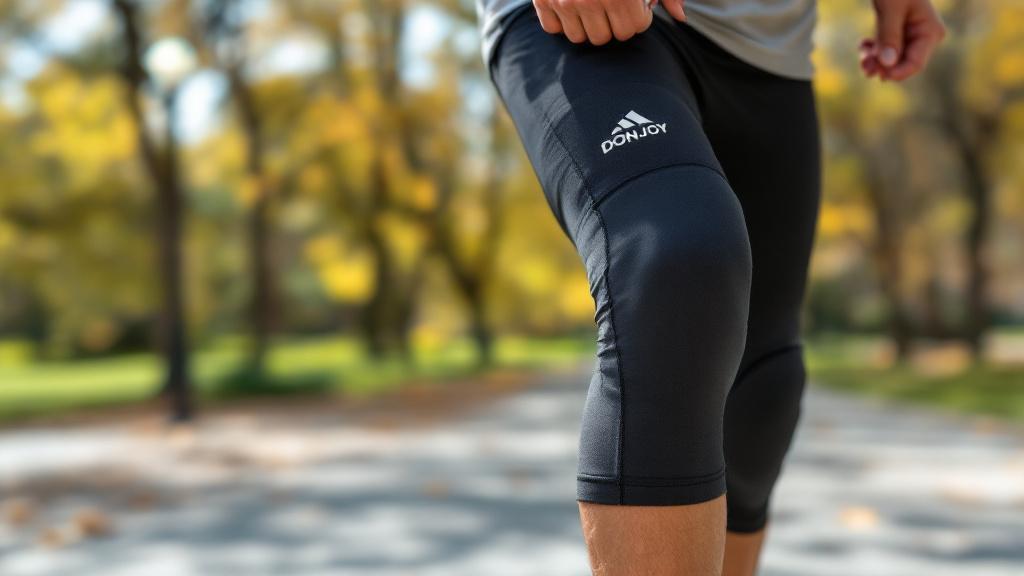Understanding Biceps Femoris Muscle
The biceps femoris muscle is a crucial component of the hamstring muscle group, significantly impacting knee function and overall mobility.

Role in Knee Flexion
The biceps femoris is comprised of two heads: the long head and the short head. The long head is integral to knee flexion and also aids in hip extension, but the short head primarily contributes to knee flexion alone. This distinction is important, as it highlights the muscle's role in various movements. The short head is activated by the peroneal nerve, while the long head is stimulated by the tibial branch of the sciatic nerve [1].
Muscle HeadFunctionNerve InnervationLong HeadKnee flexion, hip extensionTibial branch of sciatic nerveShort HeadKnee flexionPeroneal nerve
Origin and Innervation
Understanding the origin and innervation of the biceps femoris muscle is key to comprehending its function. The long head originates from the ischial tuberosity, while the short head begins at the linea aspera of the femur. Although both heads share the same action of knee flexion, they have different innervation methods. The long head is innervated by the tibial portion of the sacral nerve (L5-S2), whereas the short head receives innervation from the common fibular, or peroneal, division of the same nerve roots.
Muscle HeadOriginInnervationLong HeadIschial tuberosityTibial portion of sacral nerve (L5-S2)Short HeadLinea aspera of femurCommon fibular division of sacral nerve (L5-S2)
Understanding the anatomy and function of the biceps femoris can provide valuable insights into knee health. Therefore, incorporating a bicep femoris stretch into a regular routine may promote flexibility and support knee function. For individuals experiencing issues like knee muscle spasm or vastus intermedius pain, targeted stretching can be particularly beneficial.
Biceps Femoris Stretches for Knee Health
Importance of Stretching
Stretching plays a vital role in maintaining knee health and preventing injuries, particularly for those experiencing knee pain. Engaging in effective biceps femoris stretches can enhance flexibility, increase range of motion, and contribute to overall knee health. Implementing these stretches into a regular fitness routine can significantly reduce the risk of injuries [3].
Here is a concise overview of the benefits of biceps femoris stretching:
BenefitDescriptionFlexibilityIncreases the ability to move the joints freely and easily.Range of MotionEnhances movement capability, making daily activities easier.Injury PreventionReduces the likelihood of knee injuries during physical activities.Knee Function SupportMaintains the strength and stability of the knee joint.
Proper Form and Technique
Understanding how to perform a biceps femoris stretch with the right form is essential. Proper alignment minimizes the risk of injury while promoting the stretch's effectiveness [3]. Key aspects to focus on include knee position, hip alignment, and back posture.
Here are crucial steps to ensure the correct execution of a biceps femoris stretch:
Incorporating these elements into biceps femoris stretching can assist in alleviating knee discomfort and improving flexibility. For more related resources, check out our articles on knee muscle spasms and why does my knee hurt going down stairs but not up.
Benefits of Biceps Femoris Stretches
Enhancing Flexibility
Stretching the biceps femoris plays a vital role in enhancing overall flexibility. Flexibility is important for maintaining a healthy range of motion in the joints and can contribute to improved performance in various physical activities. As the biceps femoris muscle is part of the hamstrings, stretching it can relieve tightness that can lead to discomfort in the knee. Proper stretching techniques ensure that the muscle is adequately lengthened, supporting better motion during everyday activities and exercise.
BenefitDescriptionIncreased Range of MotionRegular stretching creates more mobility in the knee joint, reducing stiffness.Improved Athletic PerformanceEnhanced flexibility allows for better movement efficiency in sports.Reduced Muscle TensionStretching decreases tightness, which can alleviate discomfort.
Some individuals, particularly those experiencing knee pain, may find that a consistent bicep femoris stretch can lead to improved flexibility over time, allowing for greater ease in daily motions.
Supporting Knee Function
The biceps femoris muscle contributes significantly to knee function, particularly in activities that involve bending and straightening the knee. A well-stretched biceps femoris can help support the knee joint, reducing the risk of injuries associated with stiffness or muscular imbalances. Proper form during a stretch helps maintain knee alignment and stability, which is crucial for people dealing with knee pain.
Key aspects of how stretching supports knee function include:
FunctionImportanceEnhances StabilityProperly stretched muscles help keep the knee joint stable during movement, preventing injury.Reduces Risk of InjuryFlexibility in the biceps femoris can protect against strains or tears in the muscle or knee.Promotes Healthy Movement PatternsImproved flexibility encourages better mechanics, essential for activities like running or squatting.
Incorporating a regular routine of biceps femoris stretches can lead to significant improvements in knee health, especially for individuals facing challenges such as knee muscle spasms or vastus intermedius pain. Adopting proper stretching techniques fosters long-term benefits that optimize knee function.
Effective Stretching Routines
Duration and Frequency
To maintain knee function and alleviate discomfort, regularly incorporating biceps femoris stretches into a fitness regimen is essential. Research indicates that holding each stretch for a duration of 15 to 60 seconds is effective for achieving optimal results. It is recommended to perform these stretches at least three to four times per week to promote flexibility and support knee health.
Stretch DurationRecommended Frequency15 - 60 seconds3 - 4 times per week
Incorporating into Fitness Regimen
Integrating a regular stretching routine is vital for overall knee health. It enhances the effectiveness of exercises targeting the biceps femoris, as proper form and technique are crucial. In addition to the biceps femoris stretch, other techniques such as the prone quad stretch and gastrocnemius stretch can provide additional support. Maintaining proper form during these stretches involves keeping the knee fully extended, the hip flexed at least 45 degrees, and ensuring a straight back alignment to minimize injury risk [3].
Properly performing the biceps femoris stretch ensures individuals reap the full benefits while promoting flexibility and minimizing discomfort. For further understanding and techniques regarding other muscle groups, consider exploring related topics such as knee muscle spasm and gastrocnemius tendinopathy.
Injury Prevention and Rehabilitation
Impact on Injury Prevention
Incorporating bicep femoris stretches into a fitness routine plays a significant role in preventing injuries. The biceps femoris muscle, part of the hamstring group, is crucial for movement at both the hip and knee joints. In sports involving high-intensity activities, hamstring strain injuries (HSIs) are common, with the biceps femoris long head being the most affected muscle, accounting for approximately 80% of all HSIs. Regular stretching can enhance flexibility, which is vital in reducing the risk of strains and muscle tears.
Table 1 provides a summary of the benefits of biceps femoris stretching for injury prevention:
BenefitDescriptionImproved FlexibilityEnhances the muscle's ability to stretch without risk of strain.Increased Range of Motion (ROM)Allows for better movement mechanics, supporting various physical activities.Reduced Muscle TensionEases tightness in the muscle, lowering the risk of injuries during activities.
Consistent stretching also helps in maintaining muscular balance around the knee joint, which can be affected by uneven muscle tension in the surrounding muscles.
Role in Rehabilitation Programs
Stretching the biceps femoris is an essential component of rehabilitation programs for knee injuries. After an injury, the focus often shifts to restoring mobility and strength around the knee joint. Regularly incorporating biceps femoris stretches can facilitate recovery by enhancing flexibility and promoting blood flow to the area. Improved circulation aids in tissue healing and recovery [6].
Moreover, both static and dynamic stretching techniques are effective in rehabilitation settings. Evidence suggests that these techniques not only improve range of motion over time with consistent training but also do not hinder strength or performance. Dynamic stretches, in particular, can enhance power outcomes in activities like jumping and running without associated deficits [7].
Rehabilitation programs may also incorporate complementary techniques such as foam rolling to further improve biceps femoris activation and release muscle tension, contributing to effective recovery [8].
By integrating biceps femoris stretches into routine practices, individuals can support both injury prevention and rehabilitation, promoting overall knee health and functionality.
Stretching Techniques and Variations
Exploring various stretching techniques is essential for effectively targeting the biceps femoris muscle to relieve knee pain. Proper execution of these stretches can significantly enhance flexibility and overall knee health.
Different Stretching Techniques
Additional Supportive Stretches
In addition to the biceps femoris stretch, including supportive stretches is vital for comprehensive knee health. The following techniques are beneficial:
By integrating warm-up routines and effective stretching techniques, individuals can significantly lower their risk of knee injuries. These elements are integral to a comprehensive approach to maintaining knee health. For more information on specific knee-related pain, explore our guides on gastrocnemius tendinopathy and knee muscle spasm.
References
[2]:
[3]:
[4]:
[5]:
[6]:
[7]:
[8]:





